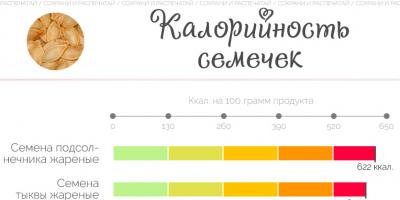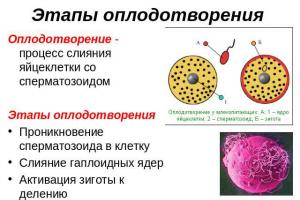The issues of conception concern all women, regardless of whether they plan to have children or vice versa - they are afraid of an unwanted pregnancy. And if there was sex without using a contraceptive, the woman will be worried about the questions: “When can I find out if conception has occurred? How long does it take after intercourse to get pregnant? As a rule, this is 7-8 days after sex, and here's why.
How does fertilization happen?
The birth of a new life is a complex process, and in order for it to occur, it is necessary that all stages of fertilization be observed:
- ovulation (release of a mature egg);
- fertilization (penetration of the sperm into the structure of the egg);
- cell division (the fetal egg begins to divide into cells, creating the basis for the development of the embryo);
- implantation (fixation of a fertilized and cell division of the fetal egg on the uterine wall).
Ovulation
In the middle of the menstrual cycle, the ovarian follicle matures and the egg is released, which at this moment is ready to meet with the sperm. This readiness lasts from 12 to 36 hours (depending on the female body and on the totality of the influence of external factors such as nutrition, stress or climatic conditions).
If during this time the fusion with the sperm does not occur, then the cell dies and is expelled from the uterine cavity along with the menstrual blood.
Sometimes there is an almost simultaneous maturation of two eggs, and if both were fertilized, fraternal twins are born. Such a female feature of the body is hereditary.

There was an ejaculation after intercourse, and millions of tiny spermatozoa rushed to the goal - to the mature egg. But the path of a tiny cell is quite long, because in order for conception to occur, it must go through many obstacles in the female body:
- 1-3 cm of the vagina to penetrate the cervix;
- 2 cm of the uterine cervix;
- 5 cm from the cervix to the fallopian tube;
- 12 cm down the fallopian tube to the ovum released from the follicle.
The distance is indicated approximately, it can vary depending on the physiological characteristics of the body and on the time elapsed after intercourse, because the egg, after leaving the follicle, moves through the tube to the uterine cavity. On average, this distance is 17-20 cm.
But the male sex cells do not just have to go this distance, they pass it in the aggressive environment of the female organs, and the seminal fluid contained in the sperm, as a rule, ceases to protect them after passing through the cervix.

Many spermatozoa die after 2-3 hours (approximately the time required for male germ cells to make their way to the fallopian tube), the rest successfully reach their goal and meet the female germ cell ready for fertilization.
But you only need one sperm to conceive, right? This is true, and such a huge amount is needed because natural selection occurs, which contributes to the conception of a healthy child and the normal course of pregnancy:
- Weak cells die in the aggressive environment of the vagina, not reaching the fallopian tubes.
- More viable sperm under the influence of fluids in the body of a woman acquire mobility.
But when the spermatozoa reach the fetal egg, this does not mean that the conception has almost occurred and after that, after 9 months of pregnancy, the birth of a child can be expected. The egg is covered with a hard shell, and the spermatozoa, with the help of enzymes produced on their head, try to dissolve it. When this happens, only one mobile cell penetrates inside, after which the fertilized egg changes its chemical composition, making it impossible for enzymes to dissolve its membrane.

The process of conception itself is not fully understood. It is not known by what principle the sperm is selected, it is only known for certain that at this moment the sex of the child is laid, depending on which carrier enters the fetal egg:
- X chromosomes - a girl will be born.
- Y-chromosomes - you should expect the birth of a boy.
How long does it take for the egg and sperm to meet? From several hours to 1 day, and then the division process begins.
cell division
After the fusion of the male and female cells, a zygote is formed, which divides and turns into a fetal egg. A morula is created, the cells of which divide after every 12-15 hours.

Cell division by day goes like this:
- 1-2 day: the zygote divides into 2 cells - blastomeres. It is in the first days that a singleton or multiple pregnancy is laid. How many embryos will be in the zygote depends on the hereditary predisposition of one or both parents. After 2 days, the zygote blastomeres formed, it laid down how many embryos will develop, after which the next stage begins.
- Day 3 When the 3rd day comes, the zygote has 6-8 blastomeres, sometimes more (depending on how many embryos develop). After 3 days, the fertilized egg begins its movement through the tube.
- Day 4 Cell division continues, sometimes at this time the embryo attaches to the wall of the tube and an ectopic pregnancy occurs.
- Day 5 This is the time when the fertilized egg usually enters the uterine cavity, continuing to actively divide. In the uterine cavity, it moves freely, but can be fixed both after a few hours and after a couple of days. Which part of the uterine wall will be chosen, it is never possible to reliably predetermine.

After the 7th day, the embryo is already firmly entrenched with the help of the chorion (the rudiment of the placenta), where it will be for the next 9 months of pregnancy.
Fertilization of the egg after intercourse is not conception. Many different factors can affect the fact that an embryo that is not fixed or poorly fixed in the uterus may die. Therefore, the pregnancy countdown can be started from the 7th day after having sex, if in the future a pregnancy test confirmed the desired conception.
Fertilization is the miracle of the birth of new life inside a woman's womb. A phenomenon that has worried doctors, parents for hundreds of years and continues to amaze all of humanity. Every woman who plans to become pregnant is interested in the question: "How quickly does fertilization occur?". There is no unequivocal answer to this question, because fertilization occurs as a result of rather complex processes in a woman's body. However, you can determine the most likely days for conception.
What is the timing of fertilization?
About once a month during the period of ovulation, one egg is released from the right or left ovary of a woman (less often two). It has been proven that the egg is able to live 12-36 hours, and sometimes its vital activity does not exceed 6 hours. If fertilization does not occur during this period, the egg is released with the onset of the next menstruation. In most women, subject to a regular cycle, ovulation occurs approximately in the middle of the cycle. However, there are cycles when ovulation is absent. Normally, a healthy woman may miss up to two ovulations per year. It is also possible that there are two ovulations in one cycle.
Sperms live much longer than an egg. Their life activity lasts about a week. Therefore, in order for fertilization to occur, it is necessary to have sexual contact a few days before ovulation or on the day of ovulation.
How long after intercourse does fertilization occur?
If we combine the survivability of the egg 12 hours and sperm 7 days, then the most likely days for conception are 5-7 days before ovulation and 1 day after. Suppose you had unprotected sex 6 days before ovulation, then fertilization can occur 6 days after the release of the egg from the ovary. Fertilization occurs directly on the day of ovulation, or rather, a few hours after it. If we count the days in a regular cycle, then fertilization occurs on the 6-17th day of the cycle.

Don't count on safe sex. Indeed, in a woman who has irregular sex, ovulation can occur immediately after intercourse, regardless of the day of the cycle. That is, it is an accidental or rare sexual intercourse that can provoke the onset of ovulation.
Fertilization is so individual that even doctors never set the exact date of conception, but keep a pregnancy record from the day of the last menstruation.
How many days does conception take? This question is asked by many girls who want to become mothers. And this worries mainly those ladies who have a problem with planned pregnancies.
The fertilization procedure can be divided into three stages:
- the process of ovulation;
- fertilization;
- division of the egg.
When ovulation occurs, the egg is released from the ovary. After that, she will be ready for fertilization in 24-48 hours. Ovulation occurs in the middle of the menstrual cycle. If the egg is not fertilized, it dies and comes out with blood during menstruation. Spermatozoa, entering the body of a woman, are able to function up to 3 days. It is not difficult to calculate when fertilization occurs. The standard is 4-5 days after intercourse. In the future, the egg, which has already been fertilized, begins to divide and move into the uterus.
Favorable period for pregnancy
 Those women who are planning a pregnancy should be aware that there are cycles in which ovulation does not occur. This may happen 2-3 times a year. In some cases, 2 eggs are ready for conception at the same time, which contributes to the further birth of twins. Every woman ovulates differently. If in the body there are malfunctions in the hormonal system, which entail a violation of the menstrual cycle, then ovulation takes place a few days earlier or later than in healthy girls. An essential condition for conception is fully mature eggs. A favorable moment for conception is 14 days from the first day of the onset of menstruation. It is at this point that a woman can become pregnant. In addition, during this period, the uterine mucosa begins to produce a large amount of mucus to make it easier for sperm to reach the target.
Those women who are planning a pregnancy should be aware that there are cycles in which ovulation does not occur. This may happen 2-3 times a year. In some cases, 2 eggs are ready for conception at the same time, which contributes to the further birth of twins. Every woman ovulates differently. If in the body there are malfunctions in the hormonal system, which entail a violation of the menstrual cycle, then ovulation takes place a few days earlier or later than in healthy girls. An essential condition for conception is fully mature eggs. A favorable moment for conception is 14 days from the first day of the onset of menstruation. It is at this point that a woman can become pregnant. In addition, during this period, the uterine mucosa begins to produce a large amount of mucus to make it easier for sperm to reach the target.
In the event that a man’s spermatozoa are weak, or some part of them is incapacitated, which can be caused by various diseases and the influence of negative factors, then fertilization will occur within the next 3-4 days after ejaculation.
How to determine when ovulation occurs
Without ovulation, conception is impossible. The egg after ovulation lives for about 11 hours. If sexual intercourse takes place during this period, and the spermatozoa enter the egg, then pregnancy will certainly occur.
 The speed of spermatozoa is about 3.5 mm per minute, it takes the sperm to reach the egg within 60 minutes. Therefore, the egg is fertilized in many women already an hour after intercourse. But the egg will reach the uterus only after 4-5 days. However, these rules are not the same for everyone, because it is possible to say exactly when ovulation occurred only after conducting research and personal observations. To do this, doctors advise measuring the basal temperature in the rectum without getting out of bed every morning, starting from the first day of menstruation.
The speed of spermatozoa is about 3.5 mm per minute, it takes the sperm to reach the egg within 60 minutes. Therefore, the egg is fertilized in many women already an hour after intercourse. But the egg will reach the uterus only after 4-5 days. However, these rules are not the same for everyone, because it is possible to say exactly when ovulation occurred only after conducting research and personal observations. To do this, doctors advise measuring the basal temperature in the rectum without getting out of bed every morning, starting from the first day of menstruation.
It is not necessary to measure the temperature for a long time. One menstrual cycle is enough. Thus, in a month, the woman will have a certain schedule on her hands, on which the day when the egg leaves the ovary will be clearly visible. The temperature will gradually increase. The release of the egg is characterized by a sharp jump in temperature and the same sharp drop. On this day, the egg is ready for fertilization.
Immediately after fertilization (on day 14), the female reproductive cell will begin to divide and move to the uterus. A week after conception, she will join the mucosa, and after 9 months the woman will become a mother.
To date, there are ways to accurately determine ovulation, for example, all the various tests or ultrasound. This way, the woman will know when the follicle ruptures and releases the egg.
How to understand that the egg has already been fertilized
 From the moment the sperm enters the egg, the woman's body will begin to rebuild and prepare for bearing the fetus. Already 5 days after fertilization, a woman may have characteristic signs that she is pregnant:
From the moment the sperm enters the egg, the woman's body will begin to rebuild and prepare for bearing the fetus. Already 5 days after fertilization, a woman may have characteristic signs that she is pregnant:
- the girl becomes irritable, nervous, her mood changes dramatically, this is explained by the fact that during conception a large amount of progesterone is released;
- the feeling of hunger is aggravated, the body needs a lot of nutrients and nutrients to maintain pregnancy;
- the sense of smell is aggravated, taste preferences change, nausea appears, especially in the morning;
- fatigue, chronic fatigue are observed, headaches and dizziness may appear, this symptomatology occurs already a day after fertilization and is a consequence of hormonal changes;
- if conception occurred on the 14th day from the first day of menstruation, then already on the 15th-16th day the girl will have a transparent discharge from the vagina, odorless.
How to determine conception at home
To quickly determine conception in the first hours after intercourse, you need to take a container, fill it with urine. In the future, drip 2 drops of iodine. In the event that the drops spread, then conception did not occur, the drops remaining on the surface in one position indicate fertilization. Some women use iodine as an indicator for yet another method. To do this, a piece of paper is taken and wetted in urine, on which iodine is subsequently dripped. A purple hue indicates that the woman is pregnant, blue - conception did not occur.
Urine can be boiled. Girls with a fertilized egg will have clear urine. If conception has not occurred, flakes will appear. Another way to determine pregnancy a few hours after intercourse is to add a teaspoon of baking soda to the urine. If bubbles begin to appear, then the woman is pregnant.
Of course, the best way to make sure that the egg has already been fertilized and conception has occurred is to visit a gynecologist or undergo an ultrasound procedure.
After 2-3 days after intercourse, you can already safely go for an examination and find out whether conception has occurred or not.
There are two points of view about the moment of creation of a new human life. Some believe that it begins at, according to another version, it is believed that this is the first in which it happened. During the menstrual cycle occurs once, so the fertilization of the egg is possible once in 25-30 days. An egg can only exist for a day, if conception did not occur at that time, a woman will be able to become pregnant only in the next cycle. Once in the uterus, spermatozoa remain alive for about 7 days. Thus, sexual intercourse a week before ovulation can lead to conception.
Ovulation can take place about two weeks before the end of the menstrual cycle. To accurately determine the day of conception, you need to know exactly when it will occur. It is impossible to calculate the exact moment, you can only approximately calculate the day of ovulation if you follow the previous cycles and do a test. If sexual intercourse happened during the period of ovulation or a few hours after it, the time of conception will depend on the speed of sperm movement. On average, it will be 50 minutes. Therefore, during the period of ovulation, fertilization occurs about an hour after ejaculation. Thus, conception is possible in the period from one hour to a week after intercourse.
Artificial insemination
In cases of female or male infertility, artificial insemination helps to conceive a child. This technique is based on the fact that the contact of eggs with sperm for the purpose of conception takes place in the laboratory. Before egg retrieval, a woman undergoes a course of treatment that stimulates the maturation of several follicles. Then an analysis is made to confirm their development. After that, a puncture is made, during which, under ultrasound control, a needle is inserted into the abdominal cavity through the vagina, with the help of which the contents of the follicles are taken. Spermatozoa are taken from a semen sample.
Eggs and spermatozoa with an optimal degree of maturity are placed in a nutrient medium that promotes spontaneous conception. The next day, they are examined under a microscope to identify fertilized eggs. Next, several embryos are placed in the uterus so that one of them is implanted. As a rule, three embryos are transferred and the rest are frozen. The procedure is carried out when the embryos are two to six days old. The success of in vitro conception currently reaches 30-35%, this technique is quite lengthy and laborious.
It is quite difficult to accurately answer the question of how long the conception occurs after intercourse, and on what day the pregnancy occurs. This is influenced by many factors and certain changes in the body of a woman.
Conception is a set of processes that contribute to the fact that pregnancy is formed in the female body. It includes not only sexual contact, but also other important changes that a woman sometimes does not notice.
What determines the moment of conception?
How long conception occurs depends primarily on the moment of ovulation in the woman's body. Ovulation usually occurs in the middle of the menstrual cycle. It represents the maturation of the egg, after which it is ready for conception. It is very difficult to know exactly when the day of ovulation will be, because it depends on many factors. During the menstrual cycle, ovulation may not happen, and maybe twice a month.
Many women try to figure out which days are most favorable for conception. You can find out that ovulation has nevertheless come by measuring basal temperature and special pharmacy tests. Yes, and the discharge on the days of ovulation changes: it becomes more plentiful and thick.
An egg that has matured and left the ovary is not viable for a long time - about 12 hours, unlike male germ cells that live for about a week. Thus, for conception to occur, the day before the day of ovulation, sexual contact must occur. That is, in order for fertilization to be successful, there must be a margin of time of about 12 hours before ovulation. It also happens that sexual intercourse causes the onset of ovulation, especially if a woman has a regular sexual life.
Spermatozoa move slowly - about 3-4 millimeters per hour, and therefore they can only get to the egg after a few hours. But due to their viability, they can wait for it for a whole week, if ovulation has not yet occurred. Thus, between sexual intercourse and conception, both a couple of hours and a whole week can pass.

That is why it makes no sense to look for signs of pregnancy on the second day after sexual contact and track any special sensations. The first signs of pregnancy, if it has come, may appear no earlier than two weeks after intercourse. In the first days after conception, there are no noticeable changes in the body of the expectant mother.
Conception stages
Conception includes three stages:
- Fertilization.
- Penetration of a fertilized cell into the uterine cavity.
- Her attachment.

Fertilization
The ovum released during ovulation is captured by the fallopian tube, after which the cell begins to move thanks to tiny villi on the surface of the tube.
If sexual intercourse occurs before ovulation and sperm enters the vagina, spermatozoa quickly enter the uterus from the vagina, and then into the fallopian tubes, where they begin to move towards the egg. After meeting with the egg, the sperm tend to fertilize it, when one of them fuses with the egg, and it is no longer available to other sperm.
When fertilization is completed, the cell begins to divide, every day it increases in size. However, this moment cannot yet be considered the beginning of pregnancy, because the zygote does not have a strong connection with the woman's body.
Penetration into the uterus
The movement of the cell through the fallopian tube takes about 5-7 days. At this time, it divides and becomes an embryo. And even at this time, after a week after intercourse, pregnancy has not yet occurred, because the educated embryo may die without reaching the uterus (due to obstruction of the fallopian tubes, inflammation, etc.). If this happens, the woman will begin critical days, and she will not know that fertilization has taken place.
In addition, an ectopic pregnancy is possible (that is, the embryo will attach not in the uterine cavity, but, for example, in the fallopian tube).
Attachment to the lining of the uterus
Having penetrated into the uterus one to two weeks after intercourse, the embryo begins to secrete special substances, due to which it dissolves a piece of the mucous membrane and is introduced into it.
When an embryo is implanted in a woman, small spotting may occur due to the attachment of a fetal egg in the uterus. This usually happens on the 7-10th day after ovulation, the discharge passes in a couple of hours or a day.
After implantation, the embryo begins its development, and a special hormone, hCG, is produced in the body of the expectant mother. At this time, the first signs of pregnancy may make themselves felt, and the woman will be able to understand that conception has occurred, and the long-awaited pregnancy has come. Thus, from the time of sexual contact to the attachment of the fetal egg, approximately two weeks pass.
Signs that conception has come
If a woman dreams of pregnancy, then she is concerned about the first signs of conception she will be able to notice, after how many days they will appear, how quickly she will be able to find out that fertilization has occurred.
The first signs of conception that have occurred are strongly associated with the changes that occur in a woman's body after sexual intercourse, and may appear even before the date when critical days should come (that is, one and a half to two weeks from the moment of conception).
A characteristic sign of the conception that has occurred is implantation discharge with blood after a week or 10 days after intercourse. Slight pain in the lower abdomen during this period is the norm. However, not everyone has such discharge and discomfort in the first weeks of pregnancy. What sensations in the abdomen in the early stages are the norm, and which ones may indicate the threat of termination of pregnancy, how long they can last, the doctor should tell whom the woman should contact after the onset of pregnancy.
Ordinary vaginal discharge can also become more abundant, this is due to the increased production of the hormone progesterone in the body of the expectant mother.
If conception has occurred, then a woman may notice the following signs:
- increase in basal temperature;
- slight malaise;
- sensitivity of the mammary glands;
- drowsiness and weakness;
- feeling of heaviness in the lower abdomen;
- headache.
These signs are not a guarantee that pregnancy has occurred. On the contrary, they may indicate that a woman will soon begin critical days.
A more reliable symptom is a delay in menstruation. After the delay appears, a test should be done to determine the level of hCG in the urine or blood. Depending on how much hormone a woman's body produces, it is possible to determine the gestational age already in the first days after a delay in menstruation. They determine how long the pregnant woman is now, both by week and by day after ovulation (in the early stages).








